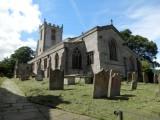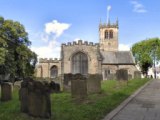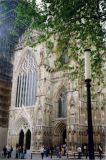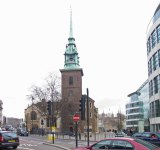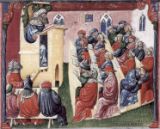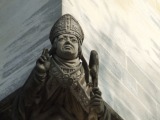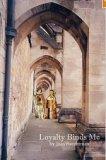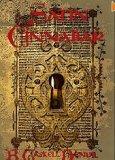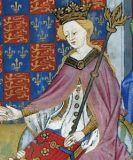‘Richard III and Learned Men’ is the first part of a talk presented to the NSW branch of the Richard III Society at the general meeting on 21 April 2012. For reasons of space it will be published in four parts. An extensive bibliography is to follow with Part IV.
I particularly liked this picture of a university lecture in the 1350s because of the student having a nap in the front of the picture and others hat the back having a chat – nothing much has changed in the last 700 years.
Last year I drew the letter “E” for one of our branch’s Scrabble talks (you have to prepare a short talk on a Ricardian/late medieval subject beginning with that letter) and looked at ‘Richard III and Education’. There were certain limitations, I had to have a topic starting with the letter “E” and my time was limited, and the word “education” brought for me the association with little kids learning their ABC. Therefore I decided to extend it to talk about ‘Richard III and Learning’ in a wider context.
The strongest indication for Richard’s interest in learning we have is his religious activity. In his day it was not possible to separate learning and religion; the centres of learning, the universities, were basically religious institutions. During his life he showed a marked support for religious institutions and liked to surround himself with learned men. Ross says that “there is no good reason to doubt that Richard was a genuinely pious and religious man” [Ross, p.128], but I believe that to see this purely in a religious context is too limited. My contention is rather that Richard was interested in and actively supported learning, which for him went hand in hand with his faith.
In the following I want to demonstrate this in three areas: Richard and his connection to a selection of learned men, his connection to the centres of learning and his actions as a law maker.
Richard III and Learned Men
Richard realised that learned men would provide competent counsellors and administrators, and took full taken advantage of this. As Sutton and Visser-Fuchs say, “The list of … learned men in his employment is a long one”. [Sutton & Visser-Fuchs, Hours, p.80] Ross remarks on his love to surround himself with graduate scholars and likens him to Henry V, rather than Edward IV. He sees the praise for him of the Canterbury Convocation of 1484 as the result of his protection of the church and his patronage of learning. [Ross, p.132] In addition, it can be said that “he may have himself possessed a little more learning that most men of his background”. [Sutton & Visser-Fuchs, ‘Cambridge’, p.119]
The fashion for learning was not new in Richard’s day, it is rather the continuation of a trend which started in the first half of the 15th century with men like William Bingham, and – even earlier – William Wykeham, bishop of Winchester. Though neither of them had been particularly well educated themselves, they both were alarmed at the lack of educated clergy and teachers and set out to do something about it. [ODNB ‘Bingham’; ODNB ‘Wykeham’]
It has been said that Richard favoured graduates from Cambridge rather than from Oxford [e.g. Ross, p. 132], but the case is not as clear cut as it might seem. While there was a certain amount of Cambridge graduates among the men near Richard, there were also quite a number of men from Oxford. In addition, many of learned men in Richard’s service had connections with both universities as well as foreign ones. [Sutton & Visser-Fuchs, ‘Cambridge’, p.118]
An early direct influence on Richard was probably George Neville, Archbishop of York, who was a well-educated patron of learning and a great benefactor of Oxford University, where he had studied at Balliol College. He is also regarded as a supporter of the revival of Greek studies. Several of his associates would later prosper through their association with Richard, for instance John Shirwood, Thomas Langton, Thomas Barowe (though I question his association with Neville) and Edmund Chaderton. [Sutton, ‘Piety’, pp.87-88; ODNB ‘Neville’]
I would like to introduce six men, who were at their time known for their high degree of learning and also had a more or less close association to Richard.
Richard’s choice for the two bishops he appointed while king is telling: Thomas Langton of Salisbury and John Shirwood of Durham, both had more or less direct associations with George Neville – and both were known for their learning. [Sutton & Visser-Fuchs, Hours, p.80]
1. Thomas Langton (c.1430–1501)
Thomas Langton was the brother of a long standing associate of George Neville. Edward IV seems to have been impressed by him and helped him in his early career. He also used him in diplomatic missions, a pattern that continued under Richard III. Richard must have liked him a lot, because he did not suggest him for a bishopric only once but twice: when in May 1483 the then bishop of St David’s died, Richard as protector suggested Langton for the post; and in early 1485 he secured his translation to Salisbury. While he certainly was useful to Richard as a diplomat, it was specifically his learning, which earned him his elevation. [ODNB ‘Langton’; Sutton, ‘Piety’, p.88; Ross, p.133]
Langton accompanied Richard on his progress in August 1483, during which he made his famous remark:
He contents the people where he goes best that ever did prince; … God hath sent him to us for the weal of us all. [quoted in Potter, p.127]
2. John Shirwood (d.1493)
John Shirwood came from a family of keen Yorkists. He was another associate of George Neville, and both he and Richard as duke of Gloucester worked for Neville’s release when he was imprisoned after Barnet. Shirwood was famous for being one of the earliest English humanists. He had a rare knowledge of Greek and wrote in polished Latin. He had an extensive library containing more than three dozen, mainly printed, works. He wrote his name in them, usually on the last page, together with the date and place where he had bought them, giving us an idea where he was when. Richard was personally interested in the County Palatinate of Durham. And as his books show, Shirwood, who had been in Rome off and on since 1477, spent virtually the whole time of Richard’s reign in Rome, which led some commentators to the conclusion that his absence might have been an added point in favour of his selection. However, he was in England for Richard’s coronation, and must have impressed Richard on this occasion. In addition to the bishopric, Richard also recommended him for a cardinal’s hat, so he must have thought quite highly of him. [ODNB, ‘Shirwood’; Allen; Williams]
3. John Gunthorpe (d.1498)
Another renowned scholar and humanist with close relations to Richard was John Gunthorpe, dean of Wells. While protector, Richard made him keeper of the privy seal on 10 May 1483, an office he retained throughout Richard’s reign. Richard also used him on diplomatic missions as he was an eminent Latin and, like Shirwood, Greek scholar. [Ross, pp.133-134; ODNB ‘Gunthorpe’]
4. John Russell (c.1430–1494)
Richard’s choice for his chancellor fell on John Russell, bishop of Lincoln. Russell had studied civil and canon law at Oxford, while both Langton and Shirwood had degrees in theology. On the one hand Russell was a career civil servant – he had been counsellor of Edward IV – making him a likely choice, but he was also an eminent scholar. Thomas More was later to describe him as “one of the best learned men undoubtedly that England had in his time.” [quoted in Ross, pp.132-133] He is known as one of the first to buy printed books on the continent and bringing them into England in 1466. [Armstrong, p.268-269; Masek, p.7]
5. John Doget (d.1501)
All four men chosen by Richard for public office confirm what Ross sees as “an increasing awareness of the importance of humanistic scholarship as a qualification for high office in the clerical establishment of government”. [Ross, p.134] However, even with his more private appointments, Richard showed that he valued learning in the men he surrounded himself with. He selected John Doget as his private chaplain in 1483. Doget was another noted scholar and author among other things on a documentary on Plato’s Phaedo. [Ross, p.134]
Richard was not alone in striving for a “better education of the clergy and the improvement of services in their localities” [Sutton & Visser-Fuchs, Hours, p.80], nor was he by any means the first. After the challenge of Lollardy many people saw the need for better educated priests. It is in this context that we have to see Henry VI’s interest in Eton College as well as university colleges. It was Henry who had promoted William Waynflete. [Bennett, pp.84-85]
6. William Waynflete (c.1400–1486)
The first five men all benefited largely from Richard’s patronage. However, he also had contact with one, whose career started long before Richard.
William Waynflete was an interesting character, whose “concern with the teaching of grammar … were to dominate his career” [Davis, p.3]. From a gentry background, Waynflete had been a schoolmaster at Winchester College for 11 years, when he came to the attention of Henry VI, who “head hunted” him for the position of provost of his newly established Eton College. His association with Henry helped his career tremendously and he became Bishop of Winchester in spring 1447, a position he fulfilled conscientiously. [Davis, pp.13-15]
He also served as Chancellor of England during the difficult time from 1456 to 1460. As chancellor his main aim seems to have been to establish peaceful relations between both sides, but I think it is correct to say that “Political activities were not Waynflete’s principal concern” [ODNB ‘Waynflete’].
His main motive was the promotion of education and for this purpose he founded St Mary Magdalen College in Oxford on 12 June 1458. [Gardiner] His college is seen – after William Bingham’s Godshouse in Cambridge – as the second secondary school training-college. [Lloyd, p. 38] He gave valuable gifts of books to the library of his college. The emphasis was on the college’s responsibility to teaching. [Gardiner].
Part 2 – Richard III as the Founder of Collegiate Churches
Part 3 – Richard III and the Universities of Oxford and Cambridge
Part 4 – Richard III as Law Maker (incl. bibliography)
Tags: Books, Cambridge, Church, Learning, Oxford, Richard III
